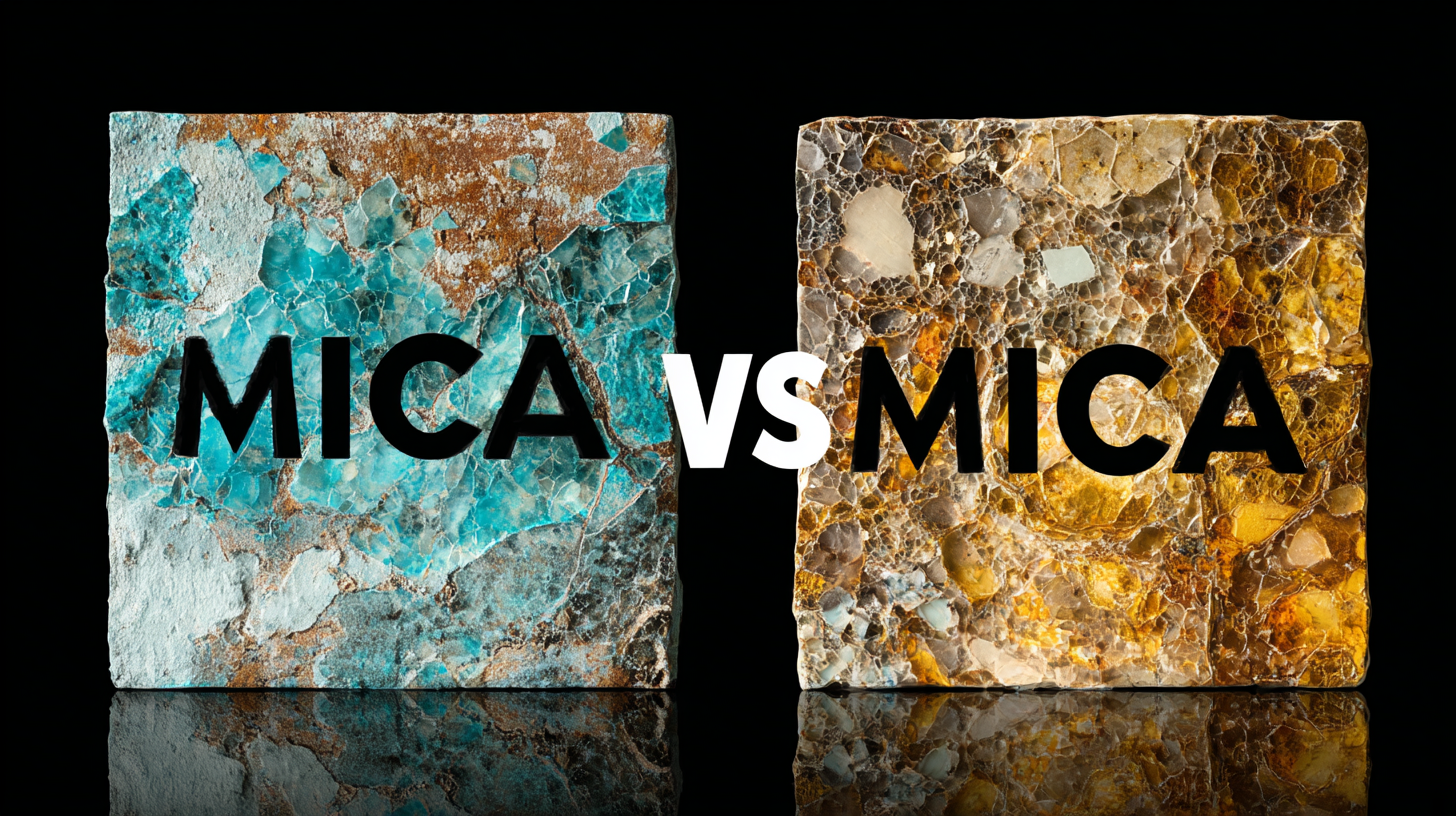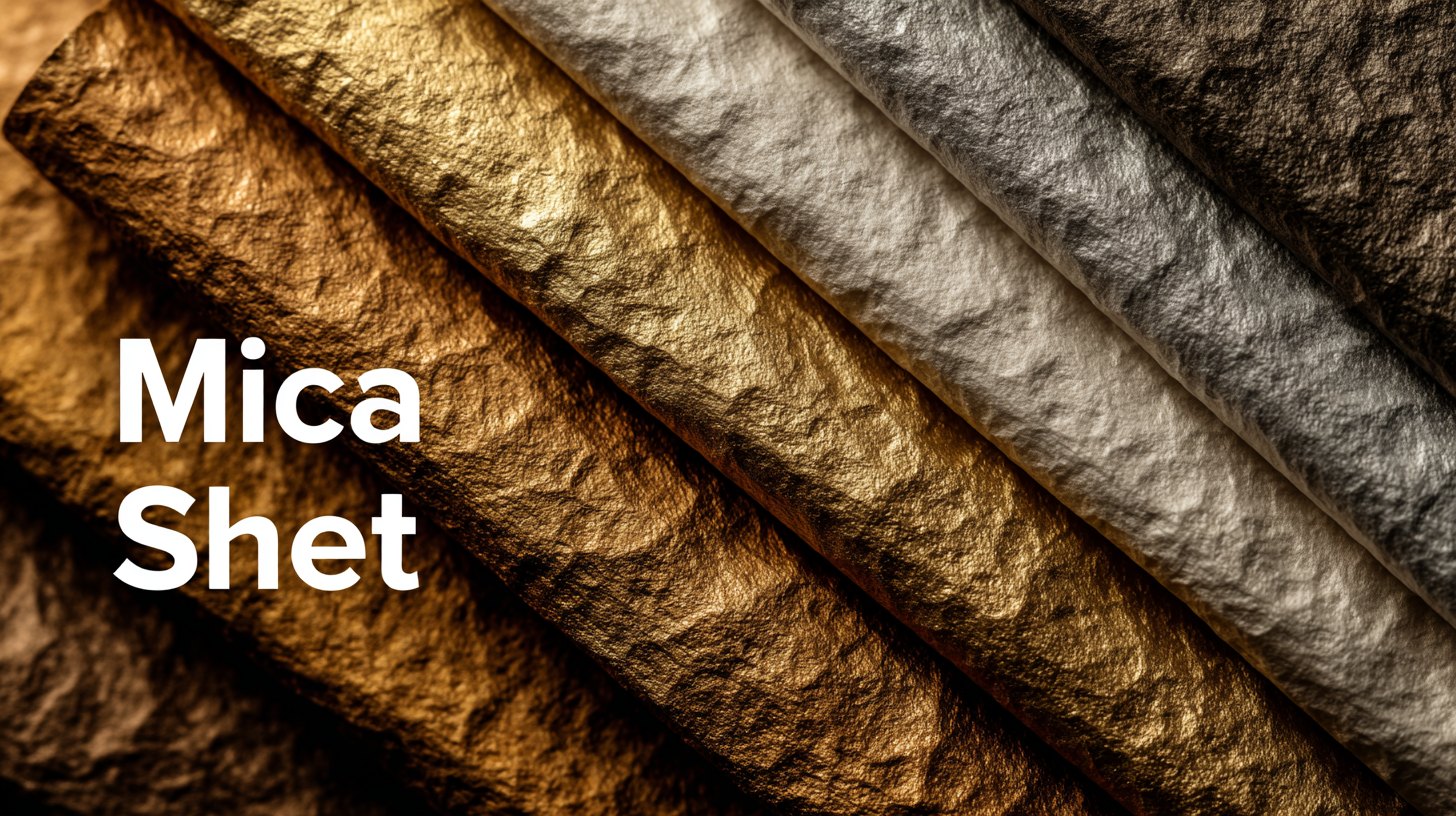QR Code
About Us
Products
Contact Us

Phone

Fax
0086-574-87527773

E-mail

Address
No 432 Zhenhai Middle Road, Luotuo Street, Zhenhai District, Ningbo City, Zhejiang China
In today's manufacturing landscape, the versatility of mica sheets has made them indispensable across various industries, including electronics, automotive, and construction. According to a recent market report by Grand View Research, the global mica market size was valued at approximately $1.9 billion in 2022, with a projected CAGR of 4.6% from 2023 to 2030. This growth underscores the increasing demand for high-quality mica sheet use in applications ranging from insulation materials to decorative finishes. However, understanding the differences between the various types of mica sheets—such as muscovite and phlogopite—along with their specific attributes and suitable applications is crucial for maximizing their potential. This ultimate guide aims to provide a comprehensive comparison of mica sheets, equipping professionals with the knowledge needed to make informed decisions for optimal usage in their projects.

When selecting mica sheets for your project, it’s crucial to consider several key properties to ensure optimal performance. First and foremost, the thermal stability of mica is paramount. Mica sheets can withstand high temperatures, making them ideal for applications in insulation, electronic components, and furnace linings. Understanding the maximum operating temperature and thermal conductivity will significantly affect the longevity and efficiency of the end product.
Another essential factor is dielectric strength, which measures a material's ability to resist electrical breakdown. High dielectric strength is vital for electronic applications, as it ensures reliability in insulating applications. In addition, one should examine the thickness and flexibility of mica sheets. Thicker sheets may offer better insulation but could compromise flexibility, while thinner sheets may be easier to fit in tighter spaces. By carefully evaluating these properties, you can select the appropriate mica sheet that aligns with your specific needs, ensuring optimal usage and performance in your applications.
Mica sheets are versatile materials widely used across various industries due to their unique properties. The primary types of mica sheets include phlogopite and muscovite, each exhibiting distinct characteristics that cater to specific applications.
 Phlogopite mica sheets, often used in high-temperature environments, boast excellent thermal resistance and electrical insulation. This makes them ideal for applications in electronics and electrical equipment, where heat management is critical.
Phlogopite mica sheets, often used in high-temperature environments, boast excellent thermal resistance and electrical insulation. This makes them ideal for applications in electronics and electrical equipment, where heat management is critical.
On the other hand,
muscovite mica sheets are prized for their transparency and dielectric strength, making them suitable for applications where visibility and stability are paramount, such as in windows for high-voltage electrical components and in specialized lighting fixtures.
Additionally, there are composite mica sheets that blend traditional mica with other materials, offering enhanced durability and flexibility for applications in automotive and aerospace industries.
Understanding the unique properties of each type of mica sheet is essential for selecting the right material to optimize performance and efficiency in diverse applications.
When evaluating the effectiveness of mica sheets, several key performance metrics should be considered. These metrics include thermal conductivity, electrical insulation properties, and resistance to chemical exposure. According to a report from the International Journal of Mica Research, high-quality mica sheets can exhibit thermal conductivity as high as 0.5 W/mK, making them ideal for applications requiring excellent heat dissipation. Additionally, mica sheets are known for their superior dielectric strength, often exceeding 280 kV/mm, which is critical for electrical insulation in high-voltage applications.

Tips for optimal usage include always verifying the manufacturer's specifications to ensure the mica sheet meets your application needs. Another important tip is to conduct preliminary tests on small samples to evaluate performance across varying temperatures and environmental conditions. It’s also beneficial to assess the chemical compatibility of mica sheets with the substances they will come into contact with, particularly in industrial settings, where harsh chemicals may be present.
Furthermore, it is advisable to keep abreast of the latest industry advancements. The Global Mica Market Report indicates an increasing trend towards synthetic alternatives that offer enhanced performance metrics and sustainability benefits. This emerging data provides valuable insights for those exploring new mica options for their specific applications.
When it comes to choosing the right mica sheets, balancing cost and quality is essential for optimal usage. High-quality mica sheets are typically made from superior raw materials, providing enhanced durability and thermal stability. However, these premium options can come with a higher price tag. On the other hand, budget-friendly sheets might be tempting, but they often lack the performance capabilities necessary for demanding applications. It’s crucial to assess your specific needs and application requirements before making a purchase.
**Tip:** Always request samples before making a bulk purchase. Testing how a particular mica sheet performs in your environment can help you determine whether it meets your quality standards without overspending. You may find that investing slightly more in a high-quality sheet can save you money in the long run due to reduced replacement costs and improved efficiency.
Moreover, consider the long-term implications of your choice. While a lower-cost mica sheet may save you upfront, it may not withstand the rigors of your application, leading to increased downtime or failures. Take the time to analyze not just the immediate costs but also the potential costs associated with poorer quality materials.
**Tip:** Create a comparison chart for different brands based on key factors like thermal resistance, mechanical strength, and price. This visual aid can help clarify your decision-making process and ensure that you make a well-informed choice that aligns with both your budget and quality expectations.
| Mica Sheet Type | Cost per Square Foot ($) | Thickness (mm) | Heat Resistance (°C) | Electrical Insulation (kV/mm) | Durability Rating (1-10) |
|---|---|---|---|---|---|
| Standard Mica Sheet | $5.00 | 1.5 | 500 | 30 | 7 |
| High-Performance Mica Sheet | $8.00 | 2.0 | 800 | 40 | 9 |
| Ultra-Thin Mica Sheet | $4.00 | 1.0 | 450 | 25 | 6 |
| Thick Mica Insulation Sheet | $10.00 | 3.0 | 900 | 50 | 10 |
| Flexible Mica Sheet | $6.50 | 1.2 | 550 | 35 | 8 |
Mica sheets have become increasingly popular across various industries due to their unique properties, such as high thermal resistance and excellent dielectric strength. When utilizing mica sheets, best practices can significantly enhance performance and longevity in applications ranging from electronics to construction. For instance, in the electrical sector, ensuring a clean surface during installation is paramount to prevent conductivity issues. Using appropriate adhesives that complement mica’s characteristics can further enhance its insulation capabilities while minimizing the risk of thermal expansion damage.
In construction applications, the use of mica sheets as thermal insulation requires an understanding of their compressive strength. It is essential to select the right thickness and grade for specific building requirements. Additionally, incorporating mica sheets into fire-rated assemblies can improve safety and compliance with regulations. Implementing proper cutting techniques that minimize dust and debris will not only help maintain the integrity of the sheets but also promote a healthier working environment. By adopting these best practices, industries can maximize the performance of mica sheets, ensuring optimal usage in their respective applications.
This bar chart illustrates the comparison of different types of mica sheets used across various industries. The data reflects the average usage percentage of each type of mica sheet based on industry applications.


0086-574-87527773


No 432 Zhenhai Middle Road, Luotuo Street, Zhenhai District, Ningbo City, Zhejiang China
Copyright © 2015-2024 Ningbo Nafty Sealing Materials Co., Ltd. All Rights Reserved.
| | | XML | Privacy Policy |
TradeManager
Skype
VKontakte
